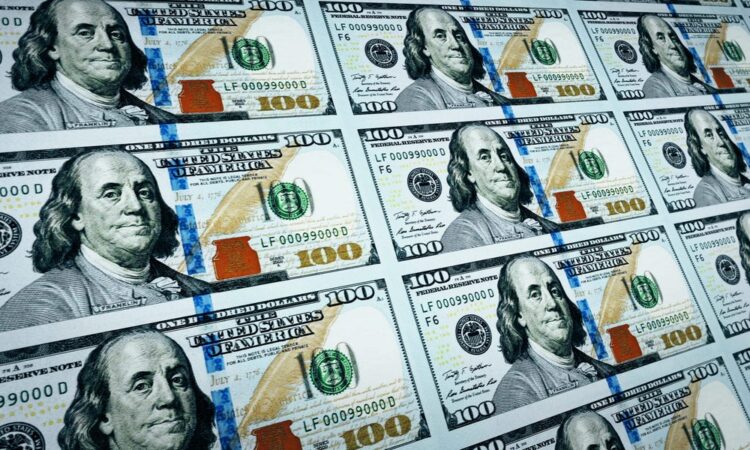
- A majority of payments in the US are made through credit and debit cards, study showed.
- Yet data going back to 2002 shows that notes in circulation have consistently increased.
- An economics expert tells BI that cash still remains crucial for “certain segments of consumers.”
When it comes to how Americans prefer to spend their money, cash is actually not king.
A 2023 study conducted by the Federal Reserve showed that the credit card was the most preferred payment method for US consumers, making up 31% of all payments.
Next was the debit card at 29%, then cash at third, making up 18% of all transactions.
That represents a consistent decline in cash payments since the pandemic in 2020, which saw many shifts in consumer behavior, including an acceleration of online shopping.
In 2019, 26% of payments were made with cash. The following year, the study showed that cash made up 19% of payments and has not recovered since.
But this hasn’t stopped the consistent churn of print currency in the US.
Federal Reserve data shows that the volume of currency in circulation has only increased since 2002. Every denomination — including less common banknotes such as the $2 bill — has increased in circulation, from the humble dollar to the Benjamins. As of December 31, there were 54.1 billion notes in circulation compared to 22.9 billion notes in 2002.
Cash is still king of some things
Economics experts say that despite increasing reliance on cards, cash remains resilient and an important payment method for many consumers.
“Cash still remains really important to certain segments of consumers,” Christopher Bechler, assistant professor of marketing at the University of Notre Dame Mendoza College of Business, told Business Insider, pointing to underbanked customers as one segment of the population who rely on cash.
Underbanked consumers often refer to people with bank accounts who rely on alternative financial services such as non-bank money orders or payday loans.
Bechler said that cash also tends to be a preferred payment method for smaller purchases under $10 or “hard-to-justify” items, referring to “guilty” purchases that aren’t necessary, like an overpriced water bottle at an airport or cigarettes.
In his 2023 study published in the Journal of the Association for Consumer Research, Bechler found that consumers “pay with card to remember and cash to forget” because the latter method won’t leave a paper trail of their purchases.
“This pattern is strongest for consumers who diligently track their card spending and occurs because consumers don’t want to see records of their unjustifiable spending,” Bechler told BI.
When cash is burned — literally
Consumer demand and trends in payment methods are not the only reasons the government continues to place print currency orders. Another reason is to replace money already in circulation that has been destroyed.
The “primary driver” for the 2024 fiscal year currency print order “was the need to replace unfit notes destroyed during normal processing,” the Federal Reserve said in a November press release.
Some experts argue that the Fed should decrease the production of higher denominations like the $100 bill. Federal Reserve data showed that the denomination is the largest in circulation, with 18.5 billion notes in 2022. The dollar bill comes in second with 14.3 billion notes.
However, the Benjamin can cause inconveniences at certain businesses that may be reluctant to accept bigger bank notes because they require more change and verification that they’re not counterfeit bills, The Wall Street Journal reported.
“Everyone almost questions you and your legitimacy for using a $100 bill,” Sage Handley, a marketing and research assistant who made a TikTok about the pangs of using a $100 bill to buy lower-priced items, told the Journal.
Kenneth Rogoff, professor of economics at Harvard University, told BI in an email that his research has shown that big bank notes are also often used in illicit activity.
“Accommodating the demand for hundred dollar bills is penny wise and pound foolish,” he wrote, “given its role in facilitating tax evasion and crime despite that about half of that use is going on internationally.”



